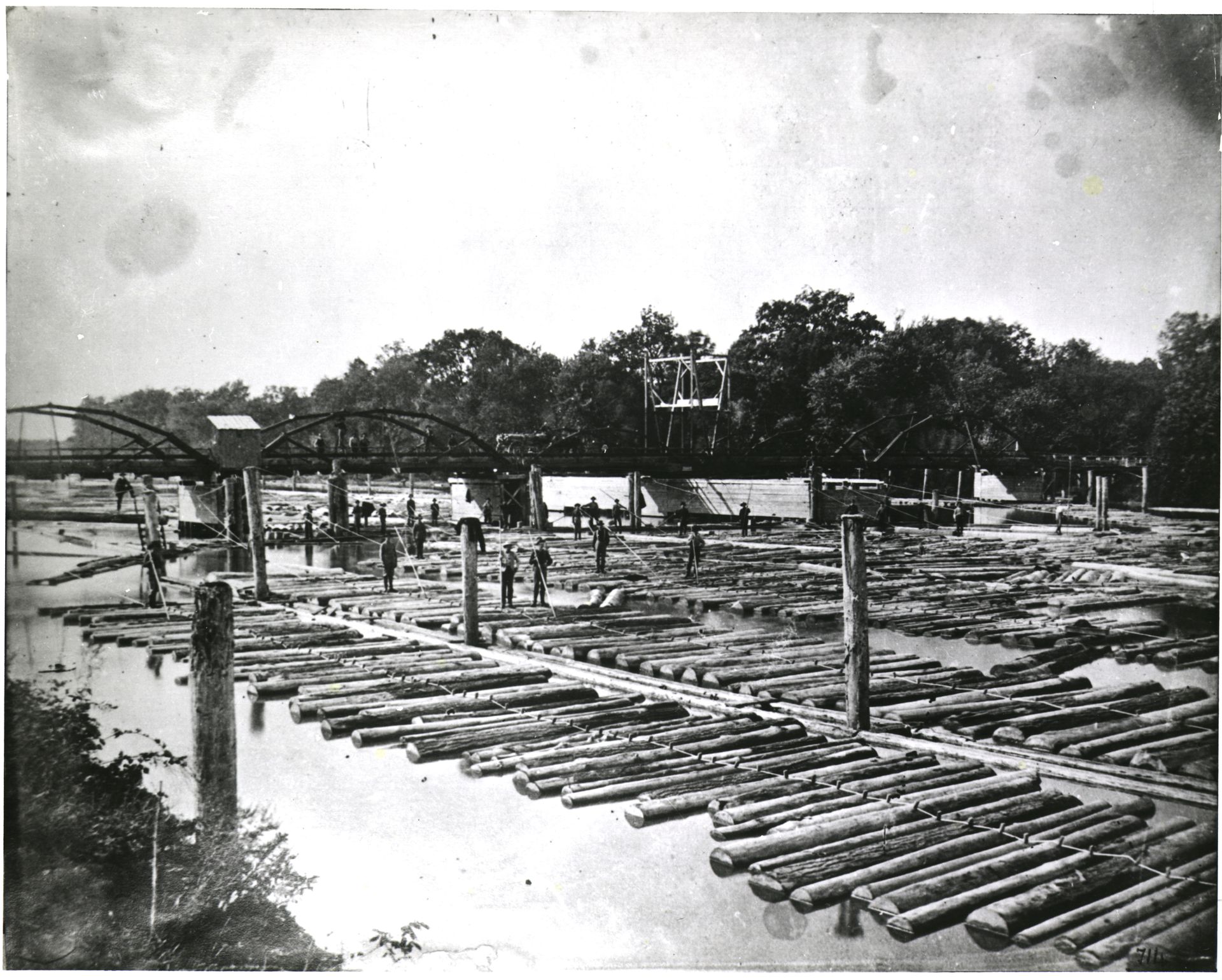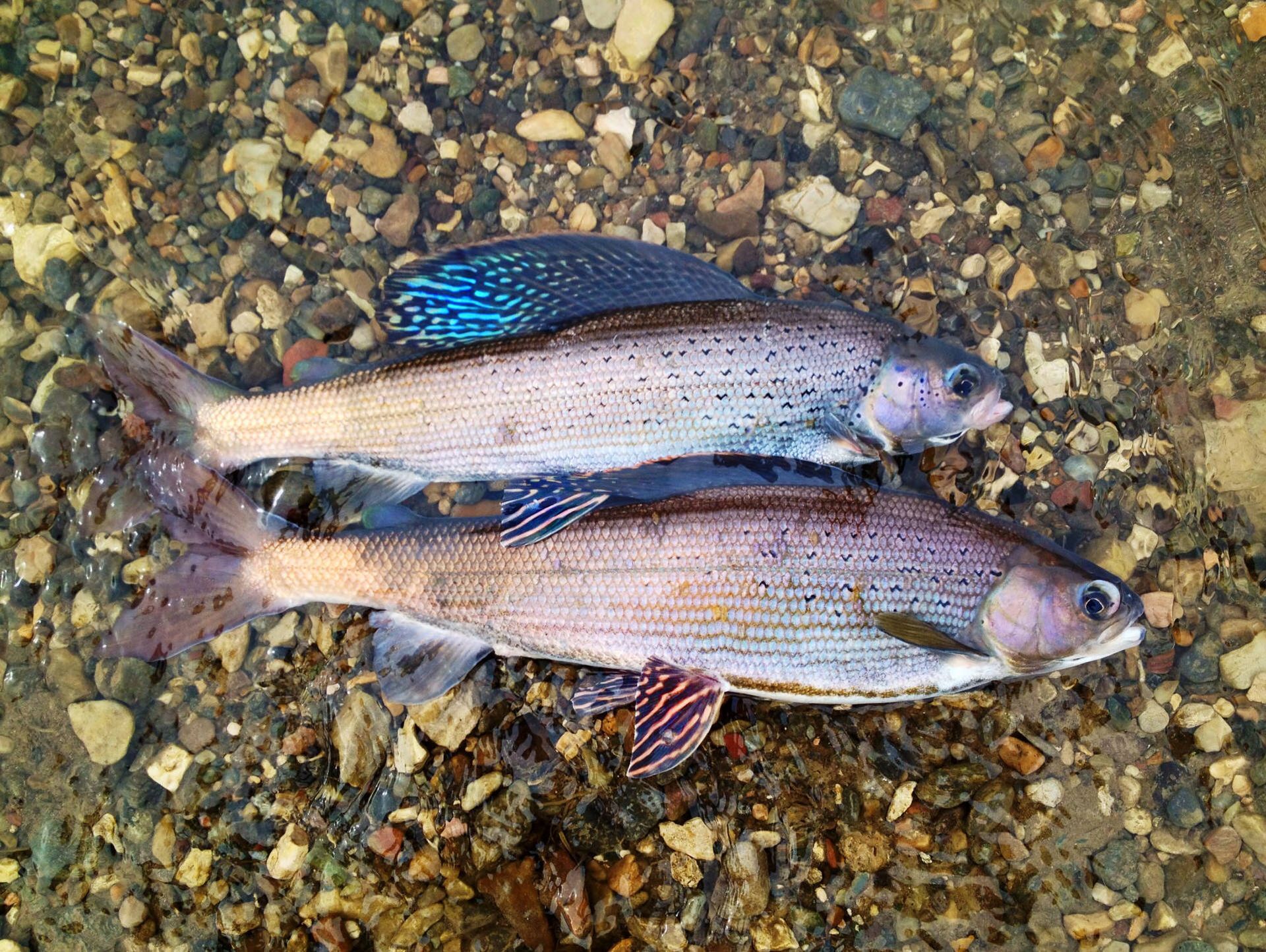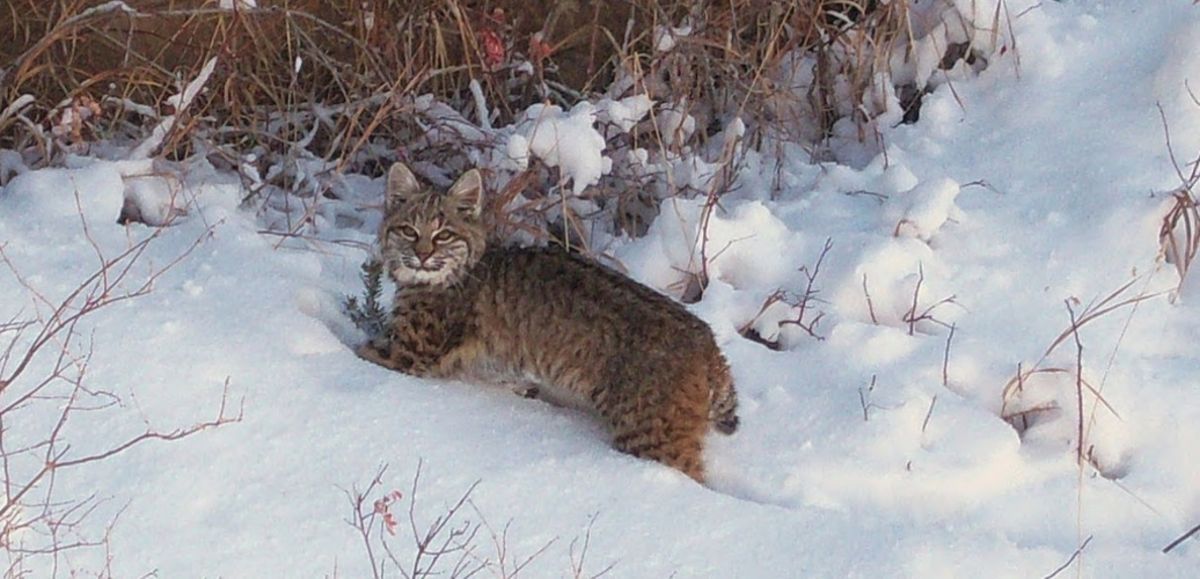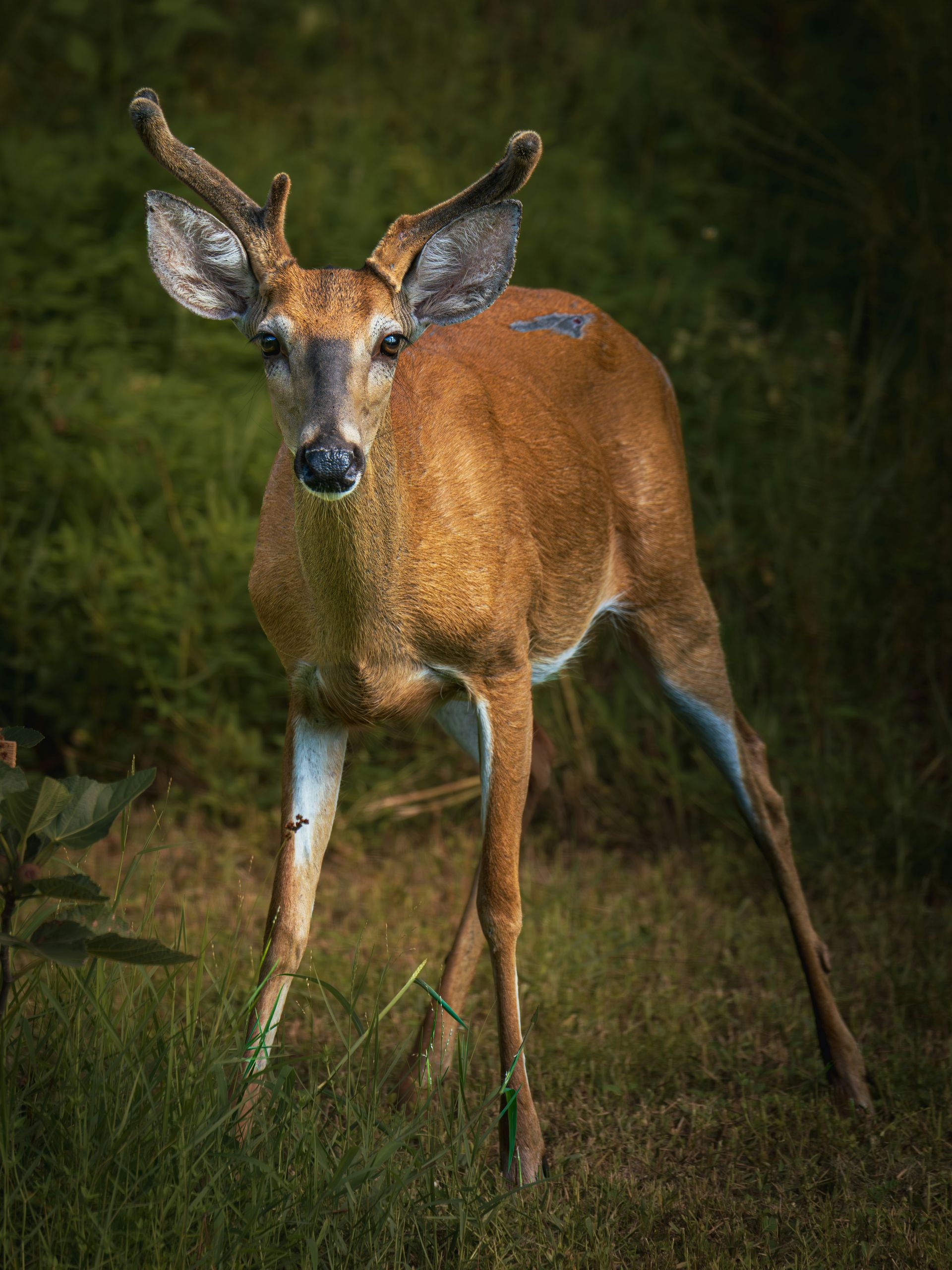Arctic grayling (Thymallus arcticus) is a fish in the salmon family; however, it is very unique, like others in the family, due to its coloration and fin patterning. This fish species had been previously documented to be range from the Arctic Ocean to rivers and streams in Canada, Montana, and Michigan. The city of Grayling, residing in the northern Lower Peninsula of Michigan, is named after this native fish. Historically, the species could be found within rivers of the northern lower peninsula and the Otter River of the upper peninsula, as recognized by the Michigan Department of Natural Resources (DNR). Within the Manistee and Au Sable rivers, grayling was considered a common food source, sport fish, and cultural resource. However, numbers began to decline due to factors including habitat destruction, connectivity barriers, over-harvesting, and invasive fish.
Image: Logging in the Tittabawassee River in the late 1870s, one of the issues negatively impacting stream connectivity for aquatic species. Courtesy of Michigan Department of Natural Resources.





